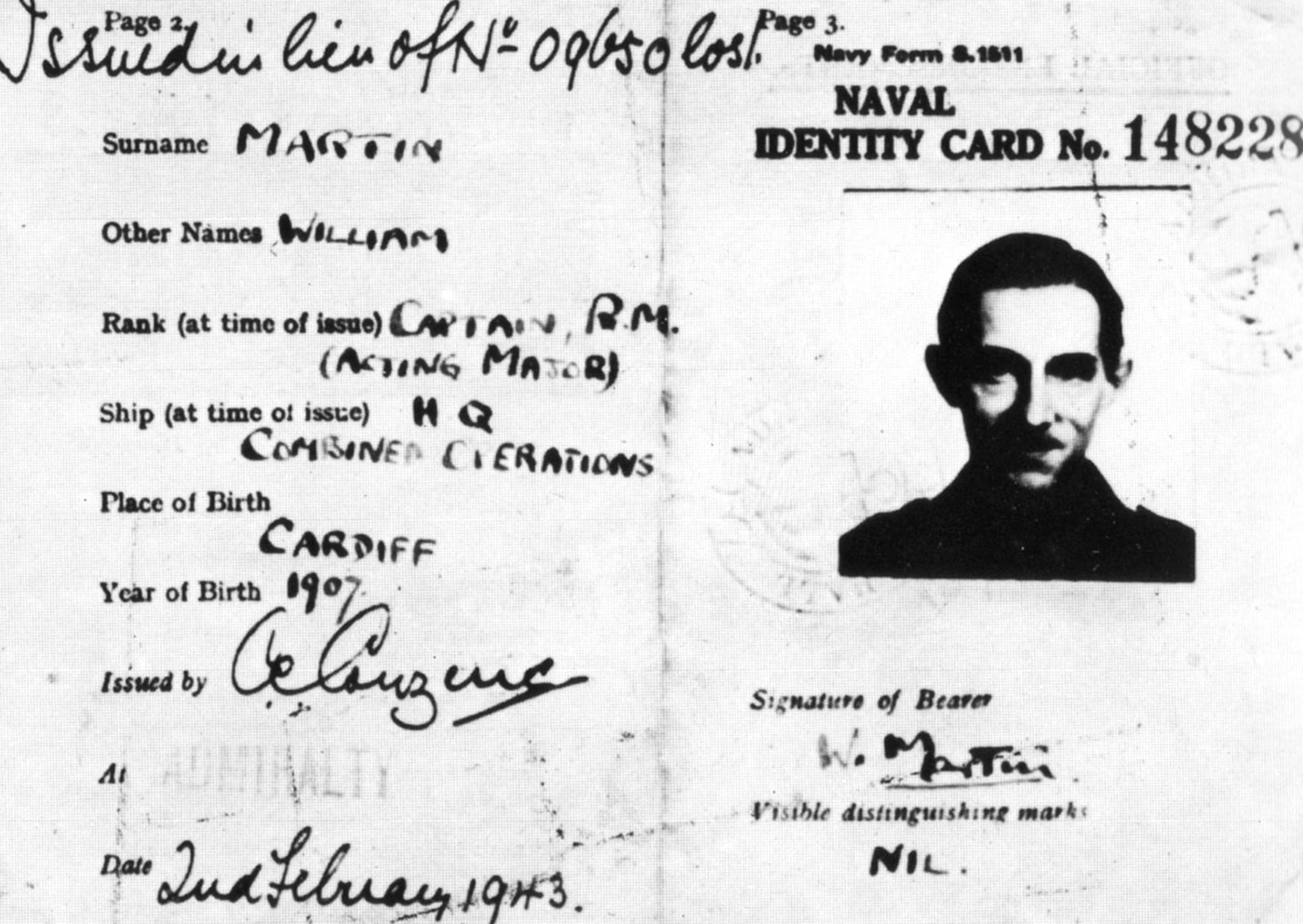The Problem: A Need to Mislead
By 1943, the Allies had reached a critical juncture. The tide was turning against the Axis powers, but there was still a long way to go. The Allies planned to invade southern Europe, with Sicily as the target.
However, this was the most obvious point of attack. The Germans knew it, and the Allies knew that they knew it. If the Nazis fortified Sicily heavily, the invasion would be a bloody and costly affair.
To outmaneuver the Germans, the Allies needed to convince them that the invasion would happen elsewhere, specifically in Greece and Sardinia. This would cause the Germans to divert their forces away from Sicily, making the actual invasion much easier.
But how could they make the Germans believe such an elaborate lie?

Charles Cholmondeley and Ewen Montagu on 17 April 1943, transporting the body to Scotland. Public domain, via Wikimedia.
The Solution: A Body, a Briefcase, and a Plan
The plan was simple in concept but complex in execution: plant false documents on a dead body and have it wash up on the shores of Spain, where German spies could discover it. The dead body needed to be dressed as a British officer, carrying top-secret documents indicating that Greece and Sardinia were the real invasion targets.
The body chosen for this grim task was that of Glyndwr Michael, a homeless man who had died in London. He had no family, no connections—he was perfect. The British intelligence service, MI5, gave him a new identity: Major William Martin of the Royal Marines.
Every detail was meticulously planned. The false documents were crafted, the story of Major Martin’s life was constructed, and personal items, such as a photograph of a fiancée and a love letter, were added to make the ruse more convincing. A briefcase containing the fake invasion plans was handcuffed to the body.
Finally, in the dead of night, the body was released into the sea off the coast of Spain, where the currents would carry it ashore.

Photograph of the fictitious girlfriend Pam, carried by Martin. She was an MI5 staff member. Public domain, via Wikimedia.
The Deception: Hook, Line, and Sinker
The plan worked almost too well. The body was discovered by Spanish authorities and, as expected, the documents were passed to the Germans. The Nazis, believing they had stumbled upon crucial intelligence, swallowed the bait. They diverted troops to Greece and Sardinia, weakening their defenses in Sicily.
When the Allies launched their invasion of Sicily on July 9, 1943, they met far less resistance than anticipated. Operation Mincemeat had achieved its goal. The deception had not only succeeded but had saved countless lives and helped accelerate the fall of the Axis powers in Europe.

Troops from the 51st (Highland) Division unloading stores from tank landing craft on the opening day of the invasion of Sicily, 10 July 1943. Public domain, via Wikimedia.
The Legacy: A Tale of an Unlikely Hero
Operation Mincemeat remains one of the most extraordinary examples of wartime deception. It was a high-stakes gamble that paid off handsomely, demonstrating the power of ingenuity and audacity. But beyond the strategic success, it’s a story of how a man, whose life had been marked by misfortune and obscurity, became an unlikely hero in the fight against tyranny.
Glyndwr Michael would receive a burial with full military honours in Spain. His gravestone reads “Glyndwr Michael served as Major William Martin. Rest In Peace.”
In the broader context of history, Operation Mincemeat reminds us that victory in war often hinges not just on brute force, but on creativity, deception, and the ability to outthink the enemy.
It’s a story that continues to captivate, not just for its audacity, but for the strange, almost surreal confluence of fate that turned a dead homeless man into one of the most important figures of World War II.

Sherman tank of the 3rd County of London Yeomanry (Sharpshooters) in the village of Belpasso near Catania, Sicily, August 1943. Public domain, via Wikimedia.

